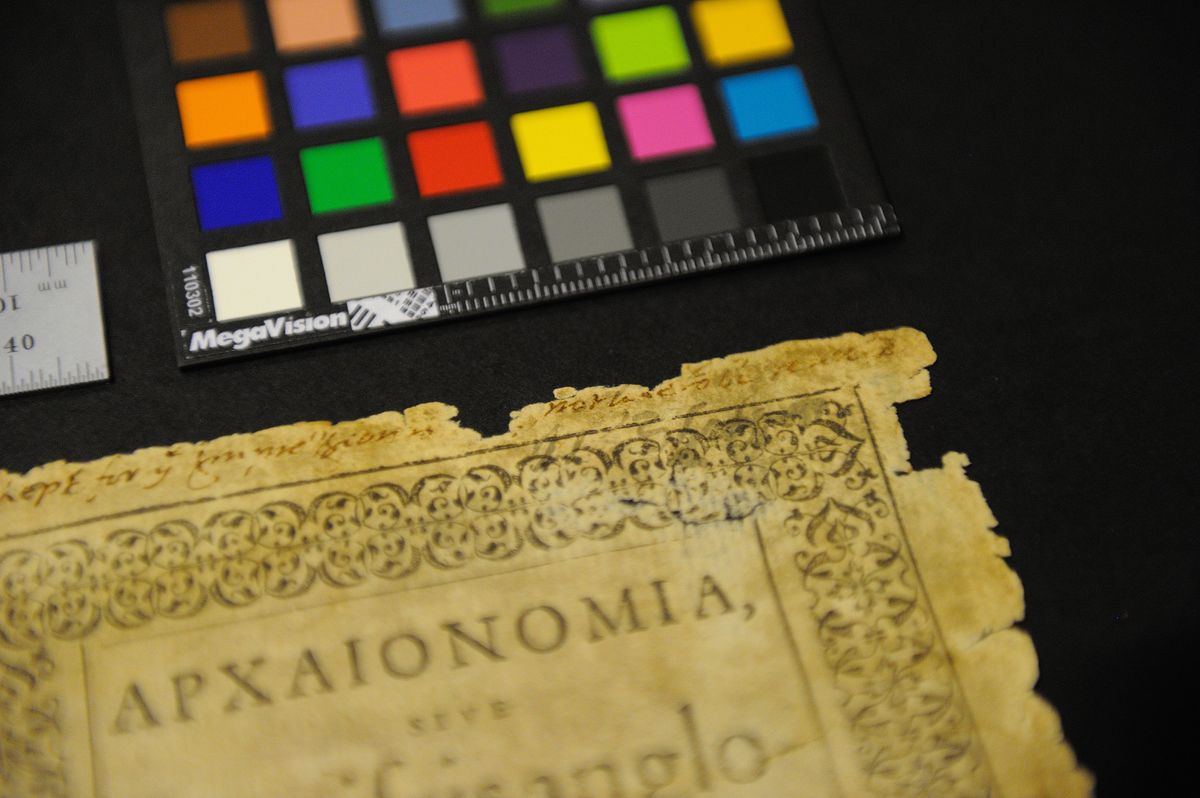Restored Scribble May Be Shakespeare's Signature

Researchers using high-tech photography have reconstructed a signature that may belong to William Shakespeare — or perhaps a clever forger.
It's not yet known who scrawled "Wm Shakespeare" across the title page of the legal treatise "Archaionomia," a collection of Saxon laws published during the reign of Elizabeth I of England. It may never be clear, said Gregory Heyworth, a professor of English at the University of Mississippi.
But now, Heyworth and his students have used new technology to reveal the nearly lost scribbles on the old book. The work is part of The Lazarus Project, an effort to revive damaged texts using a technique called multispectral imaging. The researchers take very high-resolution photographs of old text, art or objects using 12 different wavelengths of light, ranging from ultraviolet to infrared, beyond the boundaries of the human eye. Next, they use software to combine these images into the clearest possible picture of the text.
In this way, researchers can reconstruct writing that has been erased and written over, scratched out, singed or even damaged by water, Heyworth told LiveScience. For example, last year, the Lazarus Project used this technology to discover five new poems from the writer William Faulkner from a collection that had been damaged by fire.
Shakespearian mystery
This spring, Heyworth took a group of undergraduates to the Folger Shakespeare Library in Washington, D.C., to investigate a scrawl that believe to be the Bard's. The team hasn't yet begun the process of authenticating the signature as Shakespeare's, but they did reconstruct it.
"We have a clear idea now of what the signature looks like, and we can compare it to Shakespeare's signatures and forgers' signatures," Heyworth said.
Sign up for the Live Science daily newsletter now
Get the world’s most fascinating discoveries delivered straight to your inbox.
The group is currently deciphering a line above the signature, which is written in a 16th-century hand based on the style of the lettering, Heyworth said. That line is written in different ink than the signature. [History's Most Overlooked Mysteries]
On the Bard's trail
Heyworth plans to compare the signature with that of well-known forgers as well as known Shakespeare signatures such as those on his wills. He also hopes to investigate other potential Shakespeare handwriting samples, including one in a book of essays published in 1603.
If Shakespeare can indeed be linked to the Archaionomia signature, it could give new insights into the way he approached the law in his plays, Heyworth said. It may also illuminate Shakespeare as a man and historical figure.
"One of the interesting questions for Shakespeare scholars is what Shakespeare read," Heyworth said. "If we know what he read, then we know what he was thinking when he wrote his plays."
You can follow LiveScience senior writer Stephanie Pappas on Twitter @sipappas. Follow LiveScience for the latest in science news and discoveries on Twitter @livescience and on Facebook.

Stephanie Pappas is a contributing writer for Live Science, covering topics ranging from geoscience to archaeology to the human brain and behavior. She was previously a senior writer for Live Science but is now a freelancer based in Denver, Colorado, and regularly contributes to Scientific American and The Monitor, the monthly magazine of the American Psychological Association. Stephanie received a bachelor's degree in psychology from the University of South Carolina and a graduate certificate in science communication from the University of California, Santa Cruz.